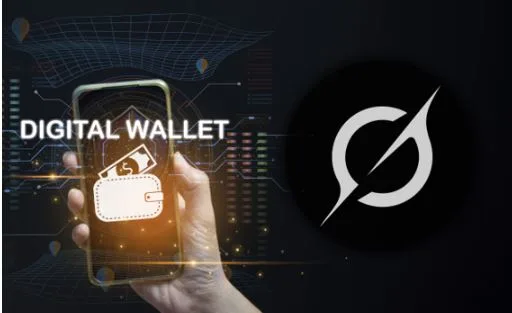Serene Sanctuaries, Scientific Solace: Sustaining Superior San Diego Wellness
The quest for optimal well-being often leads us down paths less traveled by conventional Western medicine, introducing us to time-honored practices with deep roots in holistic health. One such discipline that has found a vibrant home in Southern California is Traditional Chinese Medicine, and specifically, the therapeutic art of San Diego acupuncture. This precise, patient-focused approach to healing, offered by dedicated practitioners, including those at a renowned local clinic, is not merely about inserting fine needles; it represents a comprehensive system designed to restore balance and encourage the body’s innate ability to heal. From managing chronic pain to alleviating the stresses of modern life, acupuncture in the sun-drenched city offers a compelling alternative or complement to standard medical care, drawing a growing number of individuals seeking a drug-free route to improved vitality.
The Venerable Origins of Acupuncture
Acupuncture’s history is a profound journey spanning millennia. Originating in China, its foundational principles are intertwined with ancient philosophy and a deep understanding of natural processes. The practice is based on the concept of Qi (pronounced “chee”), which is considered the vital life force or energy that flows throughout the body.
Conceptual Foundations
The flow of Qi is believed to travel along specific pathways in the body known as meridians. These meridians connect various organs and systems, and when the flow of energy becomes blocked or imbalanced, it is thought to lead to illness or pain.
- Meridians and Channels: There are twelve main meridians corresponding to specific organ systems (e.g., Lung, Large Intestine, Stomach, Spleen, Heart, Small Intestine, Bladder, Kidney, Pericardium, Triple Burner, Gallbladder, and Liver).
- Acupuncture Points: Along these channels lie hundreds of specific points, each with a unique therapeutic function, that can be stimulated to adjust the flow of Qi.
- Yin and Yang: The philosophy also heavily relies on the concept of Yin and Yang, the complementary opposites that must be in harmony for health to exist.
The earliest written records detailing acupuncture practices date back to the second century B.C. in The Yellow Emperor’s Classic of Internal Medicine, solidifying its place as one of the oldest forms of medical practice in the world. Its endurance across centuries is a testament to its effectiveness and adaptability.
Modern Scientific Scrutiny and Validation
While acupuncture is steeped in tradition, its integration into contemporary healthcare is supported by a growing body of scientific research. Modern studies seek to understand the physiological mechanisms behind the observed clinical benefits, translating ancient concepts into biomedical terms.
How Acupuncture Works
The insertion of needles, thin as a hair, at specific points on the body triggers a cascade of physiological responses. These responses offer a scientific explanation for its therapeutic effects:
- Endorphin Release: Needling stimulates the nervous system to release natural pain-relieving chemicals in the brain, spinal cord, and muscles, such as endorphins and enkephalins. This is a key factor in its efficacy for chronic pain management.
- Increased Blood Flow: Acupuncture can promote vasodilation and increased circulation, which helps to deliver oxygen and nutrients to tissues and remove metabolic waste, accelerating healing.
- Modulation of the Nervous System: It can influence the autonomic nervous system, shifting the body from a “fight or flight” (sympathetic) state to a “rest and digest” (parasympathetic) state, promoting deep relaxation and stress reduction.
- Anti-Inflammatory Effects: Studies show that acupuncture can reduce levels of pro-inflammatory markers, offering relief for conditions characterized by inflammation.
- Connective Tissue Response: The subtle rotation of the needle, sometimes practiced by an acupuncturist, can stimulate connective tissue, creating a local micro-trauma that signals the body’s repair mechanisms.
The rigorous scientific exploration has moved acupuncture from the fringes to a widely accepted complementary therapy, often recommended by medical doctors for a variety of conditions.
Common Conditions Addressed by San Diego Acupuncture
- Musculoskeletal Pain: Back pain, neck pain, sciatica, knee pain, and carpal tunnel syndrome are among the most common complaints. Acupuncture offers a powerful, non-addictive pain relief alternative.
- Headaches and Migraines: Regular treatments can decrease the frequency and intensity of both tension headaches and debilitating migraines.
- Mental and Emotional Health: Stress, anxiety, depression, and insomnia are often treated successfully by balancing the body’s energy and calming the nervous system.
- Digestive Issues: Conditions such as irritable bowel syndrome (IBS), chronic indigestion, and acid reflux can often be managed through targeted meridian balancing.
- Women’s Health: Acupuncture is widely used to regulate menstrual cycles, manage symptoms of premenstrual syndrome (PMS), address infertility, and provide relief during menopause.
- Allergies and Respiratory Conditions: It can help to strengthen the immune system and reduce inflammatory responses associated with seasonal allergies, asthma, and chronic sinus issues.
The Patient-Centric Experience
The initial consultation with an acupuncturist is a deeply individualized process, reflecting the holistic nature of Traditional Chinese Medicine (TCM). Unlike a quick check-up, the first appointment involves a comprehensive intake process to understand the patient as a whole person, not just a set of symptoms.
What to Expect During a Session
- Detailed History: The practitioner will inquire about your main complaint, as well as your sleep patterns, digestion, emotional state, diet, and energy levels.
- TCM Diagnostic Techniques: This includes reading the pulse (feeling the rhythm, quality, and strength at six different positions on both wrists) and examining the tongue (noting its color, coating, and shape). These are classic diagnostic tools to assess the state of internal organs and the balance of Qi and blood.
- Treatment Plan Development: Based on the diagnosis, a unique treatment plan is formulated, identifying the precise acupuncture points to be used.
- Needle Insertion: The insertion of the needles is generally painless. Patients often report a sensation of warmth, a mild ache, or a subtle tingling, known as De Qi, which indicates that the energy has been successfully engaged.
- Relaxation: Needles are typically left in place for 20 to 30 minutes, during which time the patient rests and relaxes. Many people fall asleep during this phase.
The patient experience in a soothing setting enhances the therapeutic effect, making each session a restorative break from the demands of daily life.
Integrating Acupuncture into a Holistic San Diego Lifestyle
San Diego’s culture—with its emphasis on outdoor activity, healthy eating, and a balanced lifestyle—perfectly complements the philosophy of acupuncture. The practice encourages patients to take an active role in their health through dietary adjustments, exercise, and stress management.
Synergy with Wellness Practices
- Nutrition: Acupuncturists often provide personalized dietary recommendations based on TCM principles, suggesting foods that support the patient’s energetic constitution and help correct internal imbalances.
- Herbal Medicine: Many licensed acupuncturists are also trained in Chinese Herbal Medicine, prescribing custom formulas that work synergistically with the acupuncture treatments.
- Mind-Body Connection: The treatment strongly supports mind-body practices like yoga, Tai Chi, and meditation by promoting a state of calm and improving the internal flow of energy.
- Preventative Care: Acupuncture is highly valued as a preventative measure. Regular treatments can help fortify the immune system and address minor imbalances before they escalate into serious health issues.
The combination of professional acupuncture treatment and a commitment to a healthy San Diego lifestyle creates a powerful foundation for sustained wellness and vitality.
The Importance of Professional Licensing and Credentials
Choosing a qualified and licensed practitioner is paramount to a safe and effective acupuncture experience. The standard for professional practice is regulated at the state level.
Key Credentials to Look For
In the state of California, an acupuncturist must be a Licensed Acupuncturist (L.Ac.). This license requires:
- Completion of a rigorous, accredited Master’s or Doctoral degree program in Traditional Chinese Medicine.
- Passing the California Acupuncture Licensing Examination (CALE), which tests competence in acupuncture theory, clinical practice, and biomedicine.
- The National Certification Commission for Acupuncture and Oriental Medicine (NCCAOM) also offers national board certification, granting the designation of Diplomate of Oriental Medicine (Dipl.O.M.) or Diplomate of Acupuncture (Dipl.Ac.).
These credentials ensure the practitioner has the extensive education and clinical training necessary to diagnose and treat a wide range of conditions safely and effectively.
Conclusion
Acupuncture is an ancient and enduring system of medicine that offers a sophisticated and effective path to health and healing. In San Diego, a city that values well-being and a connection to natural balance, this therapeutic modality continues to gain prominence. By addressing the root cause of illness and not just the superficial symptoms, it provides a powerful means of restoring the body’s natural equilibrium and promoting long-term vitality. Its benefits are supported by both thousands of years of clinical observation and increasingly strong modern scientific evidence. For those seeking to explore a holistic, minimally invasive approach to managing pain, stress, and chronic conditions, acupuncture presents an invaluable and highly recommended option.
Frequently Asked Questions (FAQ)
Q: Is acupuncture painful?
A: No, for most people, acupuncture is not painful. The needles are extremely fine—much thinner than a hypodermic needle—and their insertion is often barely felt. Some patients may feel a mild, momentary sensation of a quick pinch, followed by a dull ache, heaviness, or tingling around the needle site, which is known as De Qi and is generally a sign that the treatment is working.
Q: How many sessions will I need?
A: The number of sessions required is highly individual and depends on the condition being treated, its severity, and how long you’ve had it. Acute conditions may require fewer treatments (e.g., 4-6), while chronic or more complex issues may require more initial treatments, followed by monthly or seasonal maintenance visits. Your acupuncturist will develop a personalized treatment plan for you.
Q: What should I do before and after an acupuncture treatment?
A: Before: It is best to eat a light meal or snack a couple of hours before your appointment. Wear loose, comfortable clothing so the acupuncturist can easily access points on your arms, legs, and torso. Avoid strenuous activity and caffeine immediately before. After: Rest is advised. Avoid intense exercise or heavy work for a few hours. Drink plenty of water and observe how your body reacts to the treatment.
Q: Is acupuncture covered by insurance in San Diego?
A: Coverage for acupuncture varies widely depending on your specific insurance provider and plan. Many insurance companies now offer coverage, particularly for conditions like chronic low back pain, neck pain, and nausea. It is important to contact your insurance carrier directly or ask the acupuncture clinic to verify your benefits before starting treatment.
Q: Are the needles safe?
A: Yes, acupuncture is extremely safe when performed by a Licensed Acupuncturist (L.Ac.). Licensed practitioners use sterile, single-use, disposable needles, which eliminates the risk of disease transmission. They are also highly trained in proper needling techniques and anatomical locations.
Q: Can acupuncture help with fertility?
A: Yes, acupuncture is a commonly used complementary therapy for fertility. It may help by regulating hormone levels, improving blood flow to the reproductive organs, reducing stress, and improving the quality of eggs and sperm. It is often used to support both natural conception and assisted reproductive technologies like IVF and IUI.





